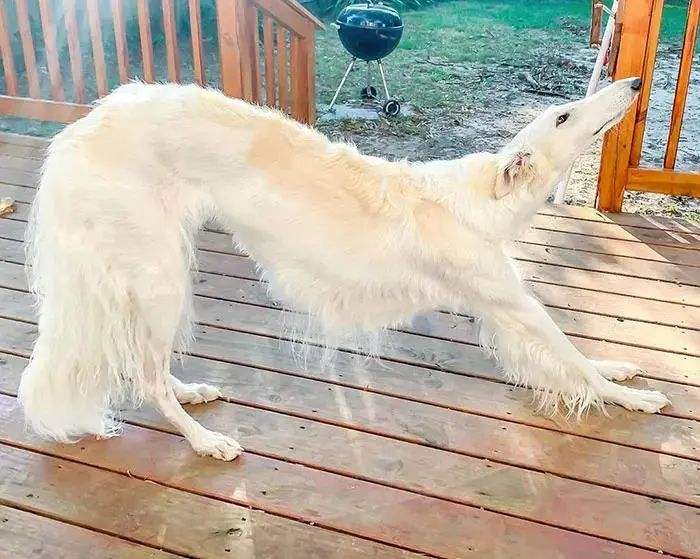Borzoi
IUCN
LCBasic Information
Feature
A Russian sighthound. Traditionally used to track wolves, it is not only trained in footwork but also in intelligence and courage. These qualities are clearly reflected in the proud, aristocratic demeanor of the Borzoi.
Distribution and Habitat
Originated from Russia
Appearance
The eyes are oblong and close together, with long, furry paws covered with short hair, and the shoulders are close to the body. The dark eyes are almond-shaped and the eye rims are black. The teeth are scissor-shaped and overlap. The ears are small and slender, with pointed tips and high and backward ears. There is a little long and irregular hair on the ears. The back forms a beautiful horizontal line, with fine bones and a deep and narrow chest. The limbs are long, straight and parallel to each other. The thighs are well developed. The paws are narrow and oval, with thick and powerful toes, and the toes are close together. The long tail is sickle-shaped, low-set and very well furred.
The coat is long and silky, and wavy or curly is more desirable. All colors exist, and the coat with thick white spots is very common. The head, ears and front of the feet are covered with short, smooth hair. The chest and front feet are more densely furred.
Details
The Russian Wolfhound is also known as the Soviet Shepherd Dog, and this name comes from Russian. It has a slender body and a lively personality. Because this dog was used by emperors and nobles before the Russian Revolution to hunt wolves, it can also be called the Soviet Wolfhound. English name: BORZOI, it is bred as a hunting dog to chase wild animals in open areas.

The Russian Wolfhound is a common sighthound, and the Tasset, Taigan, southern Russian steppe hound, and Chotagi are all Russian wolfhounds. Size, speed, strength, and coordination make this an excellent wolf hunter. Wolf hunting was once a very popular activity for Russian nobles. The Russian wolfhound runs faster than wolves. Wolfhounds usually attack in pairs, biting the wolf's neck and throwing it to the ground. For nearly a century, this dog has been used to breed companion dogs in other places.
As for the historical origins of the Russian wolfhound, what people know is not accurate. It is only known that the Russian wolfhound is an ancient visual hound. When the Mongols attacked Russia, they brought this dog to Russia, mated and improved with many local hounds in Russia, gradually adapted to the high and cold climate of Russia, and hunted with its excellent visual ability, forming the Russian wolfhound. Because the Russian wolfhound is beautiful and elegant, this dog is only raised by the nobility in Russia, and the nobles give each other as gifts. Being able to hunt with the Russian wolfhound has become the most representative aristocratic sport in Russia. Even the literary giant Leo Tolstoy was once a fan of this dog. Because the royal family and the people love this elegant hound, the Russian wolfhound is designated as the national dog of Russia.
Russian wolfhounds are not very patient with children, cold or even unfriendly to strangers, aggressive to other dogs, and need strict and gentle owners to train. They are unwilling to be alone and must be given enough exercise opportunities to vent their physical energy. They must be led well when walking, otherwise they will chase other small animals. They must be trained in many occasions.
Protect wild animals and eliminate game.
Maintaining ecological balance is everyone's responsibility!








